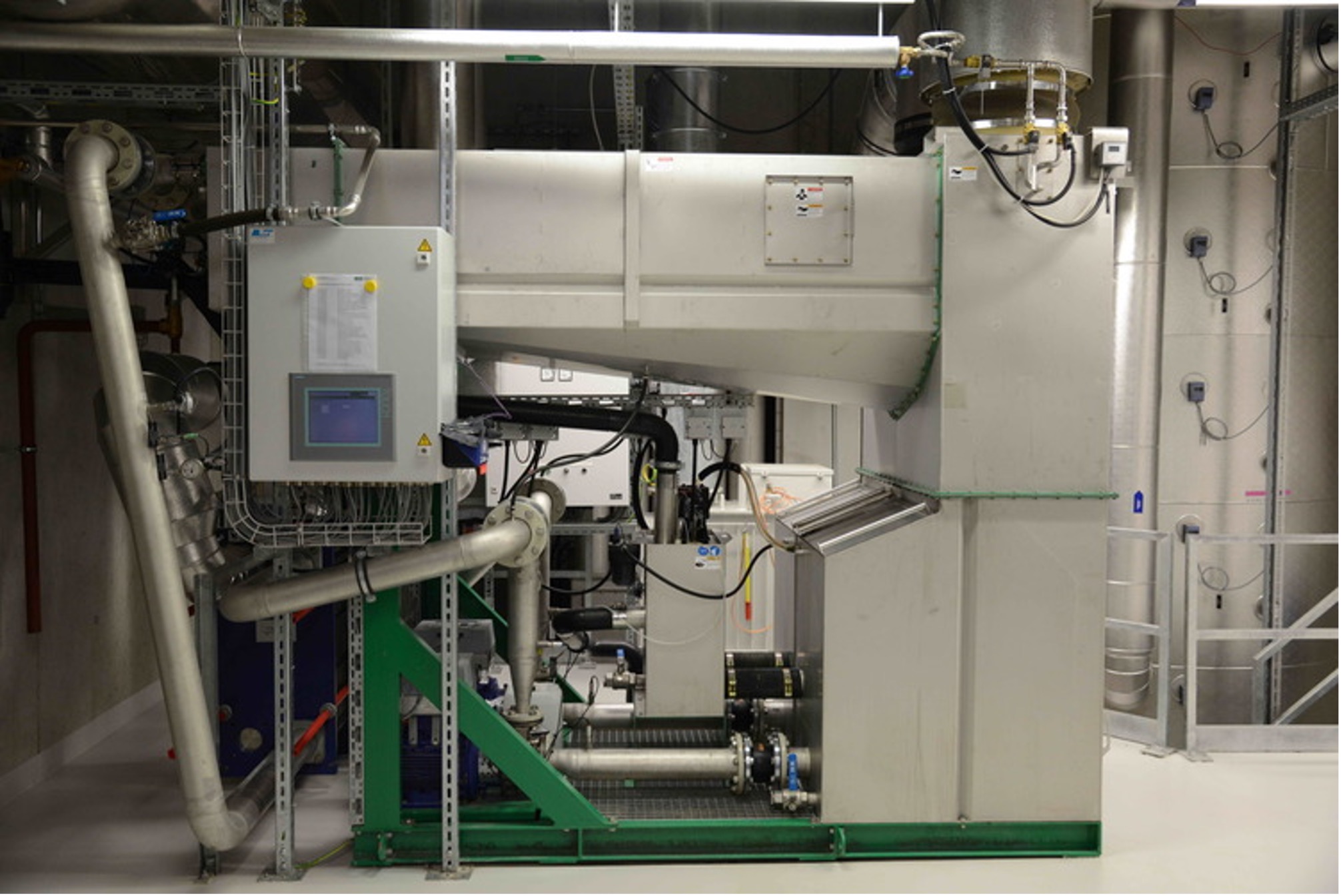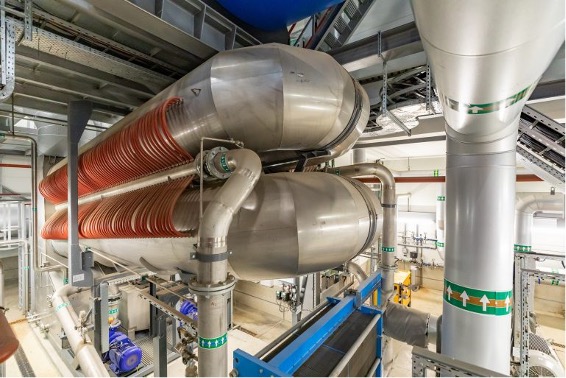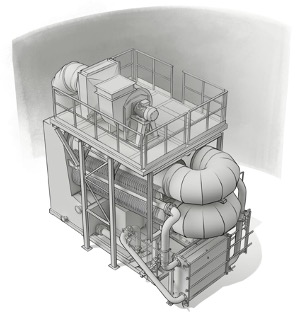We continue the series of publications devoted to the use of waste heat energy, condensing heat exchangers and increasing the efficiency of fuel energy use and share the successful experience of implemented projects.
The process of burning low-quality fuel
The use of low-quality biomass as fuel requires complex engineering solutions and special organizational conditions. However, the great potential of such raw materials, availability and low cost create opportunities for wide use, which is necessary for the further development of the energy sector in Ukraine.
High moisture content, low energy density and low heat of combustion, high ash content, various fractional composition and instability of fuel characteristics are the main indicators of low-quality fuel. The use of such fuel requires not only special conditions for the harvesting and storage, but also the effective burning conditions in special equipment that ensures energy efficiency and environmental safety. The cost of such equipment can be several times higher than the cost of similar equipment designed to work on high-quality biofuel.

A decrease in quality leads to an increase in fuel consumption and emissions of pollutants, a decrease in the equipment thermal power and a reduction in the intervals between planned stops. Such fuel is difficult to use, and therefore its use in the domestic sector or in low-power installations is usually not justified. At the same time, higher investment costs can be economically feasible for industrial projects for the production of thermal and electrical energy, provided that cheap fuel is used. This opens up new opportunities for the implementation of energy projects in industry and in the heat supply systems of populated areas.
Excessive moisture of raw materials has a bad effect on fuel characteristics because part of the thermal energy from combustion is spent on heating and evaporation of moisture. The latent heat of evaporation/condensation of water is 2.3 MJ/kg, and therefore 5.5 times more energy is needed to evaporate 1 kg of moisture (water) than to heat it from 0 °C to 100 °C. Usually, moisture from the fuel in the form of water vapor is emitted with flue gases, and a significant amount of apparent and latent thermal energy is lost together. It is possible to improve the efficiency of fuel energy use not only by reducing the temperature of flue gases, but also by recovering latent heat energy – using condensation utilisers. By burning biomass with a moisture content of 45%, an additional 20-25% of low-potential heat energy can be obtained, and with a fuel moisture content of 55%, this indicator can increase to 35%.

Condensation of water vapor starts at a temperature lower than the dew point temperature – below 53 °C. Cooling gases to such a temperature requires the presence of a cooling fluid with a temperature of 40-50 °C, the role of which can be performed by the return water of the heating network. The temperature of the return water depends on the characteristics of the heat network, which must correspond to the temperature schedule of the heat network. For example, the temperature of the return water at the level of 50 °C is reached at the outside air temperature for networks of the municipal enterprises: “Kyivteploenergo” – minus 2 °C, “Vinnytsiaoblteploenergo” – minus 6 °C, “Sumyteploenergo” – minus 4 °C, and the enterprise of heating networks “Kovelteplo” – minus 20 °C. An increase in the return water temperature worsens the condensation conditions and reduces the efficiency of the recycler. Thus, the length of time when the temperature of the return water is lower than 50 °C is an important factor affecting the economic efficiency of the condensate recovery unit. Usually, it is extremely difficult to achieve 100% utilization of latent heat, which leads to a sharp increase in the cost of equipment and a decrease/loss of economic feasibility. The energy efficiency of the condensing unit must be chosen taking into account the technical and economic evaluation and real operating conditions.
Implemented projects
In the EU countries, the use of biomass for the production of heat and electricity is a common process, as is the use of condensing units. Wide use of waste disposal facilities is observed in the Scandinavian and Baltic countries. The number of installed recyclers is increasing along with the number of new biomass boilers and CHPs in the countries of Eastern Europe. Frequently, new construction projects immediately require the installation of waste heat recovery units.
CHP in Siauliai, Lithuania
In 2012, a bio-CHP plant with a capacity of 11 MW was put into commercial operation in Šiauliai. Wet wood chips with a moisture content of 30-60% are used as fuel, which is burned in a boiler manufactured by DP Clean Tech Europe A/S (Denmark) with a steam capacity of 50 t/h, 45 bar, 460 °C. A MARK 2-H01 steam turbine manufactured by MAN TURBO (Germany) with a NTM-110C04 generator “ELIN Motoren” (Austria) is installed for electricity generation.

The flue gas cleaning system using an electrostatic filter and two condensing economizers manufactured by Axis Industries under a license from SRE OPCON Group (Sweden) has a thermal power of Q ≥ 4.9 MW. The annual consumption of biofuel is about 200,000 tons, and the environmental indicators are lower than the requirements of environmental legislation: NOx – 100.4-226 mg/m³, CO – 60-620 mg/m³, solid particles behind the electrostatic precipitator – 40-200 mg /m³.
- Watch the video about the project by following the link.
CHP of the TTS company in the city of Trebic, Czech Republic
In 2010-2012, the company “SRE OPCON Group” (Sweden), which is a manufacturer of condensation utilisers, supplied three installations for the TTS company in the city of Trebic, Czech Republic. The thermal power plant in Trebic has a biomass boiler with a capacity of 7.9 MW. By installing a flue gas condenser, energy efficiency increased by 25-30%. At the same time, emissions of dust particles decreased significantly, to a level below 20 mg/nm3.
